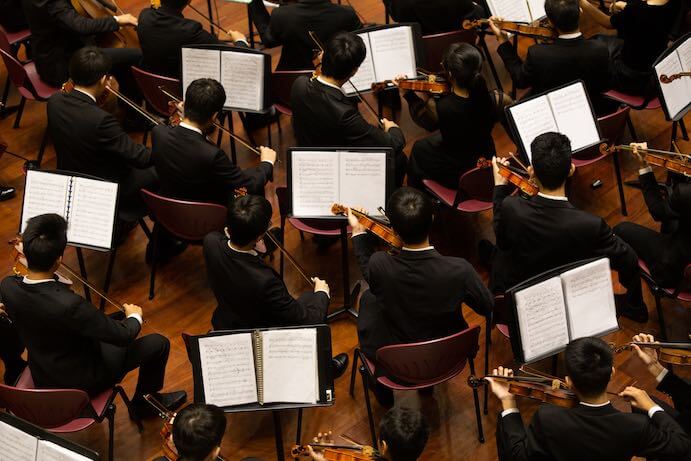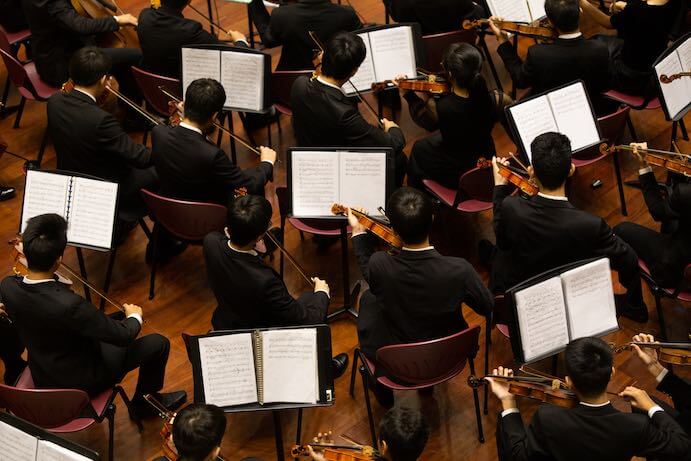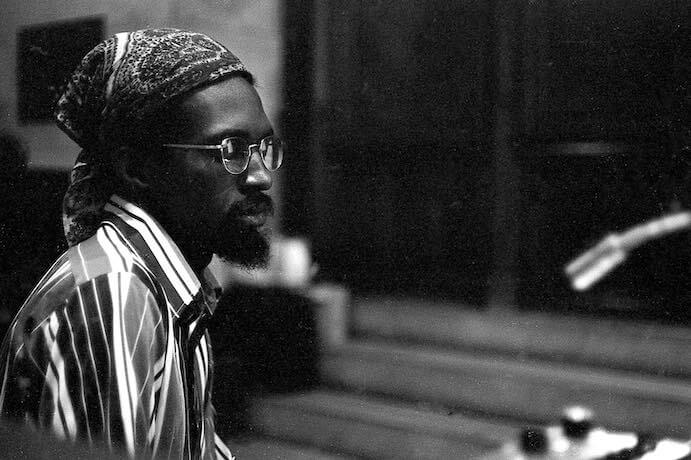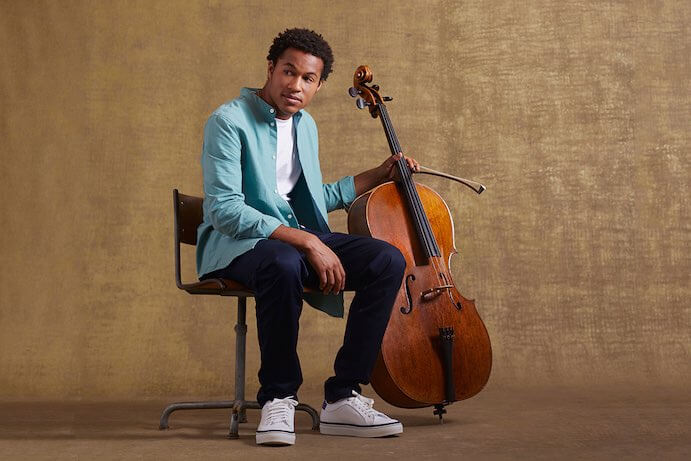
“Casting Light” is a 10-part series that explores the often invisible inequities in contemporary arts spaces. Commissioned by ACF and I CARE IF YOU LISTEN, the goal of the series is to highlight the conversations that we need to be having more openly and transparently in order to build diverse, inclusive, and equitable artistic communities. Building on our commitment to anti-racism, a culminating collection of these articles and other resources will be shared for continued learning and dialogue.
A few years after completing my BA in communications at CUNY, I found myself — amid the haze of post-2008 economic austerity and a limpid job market — considering grad school. Despite graduating from a non-music program, my advisor had a background in musicology and arts administration, and the sociology of opera was at the heart of my senior thesis. Following a stint as the Classical & Opera Editor at Time Out New York, I was keen on the idea of a master’s in musicology and applied to Brooklyn College. When I asked for a recommendation, my former advisor suggested we get lunch to discuss.
Over the din of an Upper West Side Le Pain Quotidien, she told me that she wasn’t sure she could recommend me for the program until I’d completed a second bachelor’s degree, this time in music. While it was all well and good that I’d built up a portfolio of respectable bylines and had a baseline level of musical literacy, I needed the rigor of a four-year academic program to prepare me for grad school. The reason she was telling me this in person, however, was because she wanted me to seriously consider this route based on my current work: “If you get your master’s in musicology, then you could start writing for places like the Times.”
She left me that afternoon with the bill and the impression that, if this was my only option, I would never write for the Times.
Fortunately, it turns out that my former advisor was somewhat mistaken: a master’s, in musicology or otherwise, isn’t a prerequisite to cover classical music for the Gray Lady. However, if the specifics of her conjecture weren’t true, the overall tenor was: in the United States, a mighty fortress surrounds journalism on all fronts, including cultural criticism, bulwarked by education, economics, and social status. This creates a disparity between those who can sustain themselves writing about the arts and those who can’t, which is not only an issue for aspiring critics, but one for artists, as well.

Photo by Samuel Sianipar on Unsplash
In the beginning, there are words: Newsrooms across the country — particularly those that can sustain full-time arts editors and a substantial freelance pool — are at the terminus of a pipeline that begins in the Ivy Leagues. The decades-long belt-tightening in media has left employers more risk-averse and has led to codependencies formed between hiring managers and trusted alumni networks, particularly with Ivy League institutions. Zachary Woolfe graduated from Princeton. Anthony Tommasini did his BA and MM at Yale, which also counts among its alumni Anne Midgette, Heidi Waleson, Joshua Kosman, and Greg Sandow. Sandow also attended Harvard, the alma mater for Alex Ross, John Rockwell, and Justin Davidson. Columbia played a hand in Davidson’s education, as well as those of Tim Page, Anastasia Tsioulcas, and Jeremy Eichler.
Before I’m accused of cancelling the Ivies and those who attend them, let me make it abundantly clear that this is not an attack on my colleagues who have studied at these institutions. Nor am I suggesting that this single shared experience means they represent one uniform worldview. A brief accounting of alma maters doesn’t factor in the full, rich, and nuanced lives of the names mentioned above; nor is it able to consider mitigating factors of financial aid, lower tuition rates, or the key critical voices in our space who didn’t attend these institutions.
But it’s a tangible starting point for considering how we can diversify, if not altogether redefine, the role of a critic in the 21st century in order to more equitably represent the increasingly diverse performing arts scene. In many ways, not much has changed about our means of production since the days of E.T.A. Hoffmann: a work is performed, the critic attends, and they distill their impressions of that work — often in a historical or social context — into a review that runs the following day or week. The problem with repeating this same pattern 250 years later is that we’re applying a method built by and for a white patriarchal society to artists who represent anything but.
The best critics are able to turn their work into something of transformative, even evangelical value. In 1957, John Berger wrote that “the best service the critic can do the artist is not to stop at merely interpreting his work, but to go on to interpret his position in relation to the rest of society and to explain how the future of both art and society can be affected by that relationship.” The problem is that arts critics on the whole still largely represent and speak to a part of society dominated by affluent white men.
Even as critics make an honest effort to broaden the scope of artists they cover to include more BIPOC and gender-minority creatives, this can lead to a narrow interpretation of their work. Take, for instance, the New York Times writing of composer Julius Eastman, which has been quantitatively robust in the last five years. That is, until you consider the headlines from a qualitative standpoint:
- “From a Composer’s Resurgence, a Masterpiece Rises” (June 27, 2021)
- “Review: A Rediscovered Symphony Radiates Cosmic Grandeur” (November 21, 2018)
- “A Long-Lost Symphonic Love Story Is Told Again” (November 16, 2018)
- “A Long-Lost Composer Is Raised From the Dead” (January 29, 2018)
- “A Long-Lost Score, Rebuilt With the Help of a Photo” (January 19, 2018)
- “28 Years After His Death, a Composer Gets a Publishing Deal” (February 21, 2018)
- “Minimalist Composer Julius Eastman, Dead for 26 Years, Crashes the Canon” (October 28, 2016)
What we’re left with after this survey of the headlines is the sense that Julius Eastman is to be defined as a composer: a) who died in 1990; b) whose works and profile have been considered “long-lost”; and c) whose works have merit in the wake of a rediscovery.

Julius Eastman–Photo by Ron Hammond
But what about the music? We only have half a headline from November 2018 to give us some sense of that. It’s wonderful to see Julius Eastman become more of a household name to a wider readership, but this frame of reference is incredibly constrictive. This is bad enough for Eastman, but for living artists who rely on reviews to fuel future work opportunities, it can lead to unfair pigeonholing or a misunderstanding of their art based on secondhand information.
Commenting on this form of criticism-cum-marketing from a feminist perspective earlier this year, Katie da Cunha Lewin writes: “The language in which rediscovery is couched is often about reorienting the individual artist, assimilating her into the canon of greatness, rather than actually dismantling the structures of power that have led to such women being ignored in the first place.” We can see how this assimilation plays out at the intersection of race and gender with the recent Florence Price “revival,” prompted in part by the 2009 unearthing of her erstwhile lost works, but one in which — as Alex Ross described in 2018 — left Price “mentioned more often than she [was] heard;” a victim of what musicologist and Price scholar Douglas Shadle describes as the “conscious selection performed by individuals in positions of power.”
The subconscious selection hits just as hard. Last year, less than two weeks after the murder of George Floyd, Zachary Woolfe’s profile of Sheku Kanneh-Mason stated that, should the cellist’s fame continue to grow, he “will be what the classical music world has long lacked: a black headliner.” This framing backfired among many Black and non-Black musicians and listeners who questioned the larger narratives this plays into, whether it be the erasure of other prominent Black musicians working today, or the tokenistic fallacy of a “model minority.”

Sheku Kanneh-Mason–Photo by Jake Turney
We are unfortunately in an age where the number of full-time classical critics in the United States is fewer than ten. The closure of some outlets and cutbacks at others have left it almost impossible to make a life solely based on freelance work, especially given the number of opportunities for a conflict of interest to present itself. Writing for artists and venues, including liner notes and program notes, may help to offset relatively lower-paying review or interview gigs. However, even writing one Playbill article for an orchestra concert in September may preclude that writer from taking an assignment to review that same orchestra in April. In 2021, we have to question who is being served by this current perception of journalistic ethics. It’s patently absurd that we can expect a writer to know the difference between spectralism and serialism, but not their own ability to be objective about an orchestra for whom they once wrote a program article, or an artist with whom they interact on social media.
These guidelines, combined with fewer opportunities overall, have led to many voices withdrawing from journalism entirely. Sadly, it’s often those that are also offering vitally different vantage points on the relationship between art, artists, and the broader public. Creating a more flexible relationship between critic and artist could help to nurture young and new critical voices over time and remove one of their most significant barriers to entry: access to live performances. While most organizations and presenters offer press tickets, even talented, working critics face limited availability, especially if they aren’t representing a prestige publication.
But even before setting foot in the concert hall, the odds are stacked against many aspiring critics. A 2019 study put out by the Asian American Journalists Association showed that 65% of summer interns for a group publications that included The New York Times, Washington Post, Wall Street Journal, NPR, and Los Angeles Times were recruited from some of the most selective universities in the United States, collectively referred to as the “Ivy-Plus” institutions: Stanford, MIT, Duke, the University of Chicago, and the eight Ivy League schools. As Los Angeles Times writer Gustavo Arellano told AAJA publication VOICES, this is “basically creating a caste system for young reporters.”
This caste system has a ripple effect into contemporary art spaces, especially in the US where, compared to Europe, arts subsidies are more anemic and leave less room for failure. Record labels have shuttered, agents have become more selective with their rosters, and those responsible for programming and casting are not only concerned with talent, but also marketability. While social media now allows artists more space to reach fans directly, the signal boost of a glowing (or even serviceable) review from the Times or NPR is a shorthand for credibility in an oversaturated market. The problem is that such credibility can, with the wrong critic, still do a disservice to the artist.
We’re applying a method built by and for a white patriarchal society to artists who represent anything but.
We can’t expect the demographics of the Ivy-Plus schools to change overnight. But we can demand that newsrooms expand their networks. For media outlets with formal internships, the solution should be clear: a comprehensive outreach effort to schools with journalism and communications programs with greater economic, racial, and gender diversity. These are pre-budgeted positions that significantly improve participants’ chances of finding full-time work in journalism post-graduation. One of the best things we could see as a result of Nikole Hannah-Jones and Ta-Nehisi Coates’ tenured faculty positions at Howard University is a corresponding increase in Howard (and other HBCU and HSI) alumni bylines, and hopefully a few that are especially interested in putting their critical skills to use in the arts, both on canonical repertoire and new music. But in addition to recruitment, media outlets must also face the economic realities of students trying to make a small internship stipend work in cities with some of the highest costs of living in the country without parental support or a savings account to dip into.
The opportunities for new-yet-unheard journalistic voices shouldn’t stop at the collegiate level. Publications should actively seek out new critics and fresh perspectives, especially those that challenge previous reviews or bring underrepresented artists to a wider audience. And, if finances are a problem, foundations and corporate sponsors with a track record of arts funding should be stepping up to support a critical move for equity in the field.
Rather than assimilate, our mandate now is to dismantle. That may seem like an overreaction, but dismantling does not signify a scorched-earth policy. To dismantle literally means to strip something dressed-up down to its bare, naked essentials; to get to its essence of meaning. What is the role of an artist — or a critic — if not the exact same thing?
I CARE IF YOU LISTEN is an editorially-independent program of the American Composers Forum, funded with generous donor and institutional support. Opinions expressed are solely those of the author and may not represent the views of ICIYL or ACF.
A gift to ACF helps support the work of ICIYL. For more on ACF, visit the “At ACF” section or composersforum.org.


